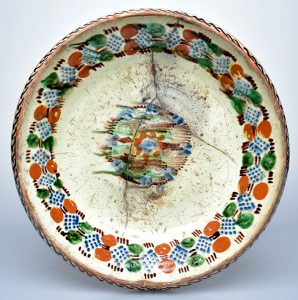
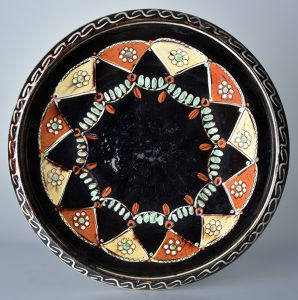

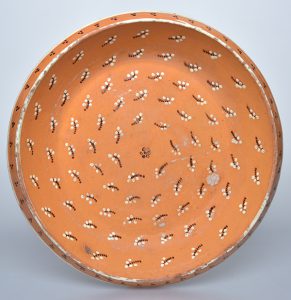
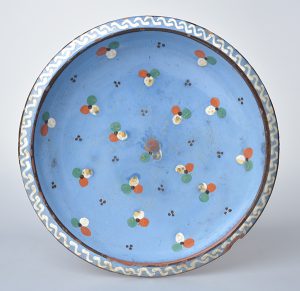
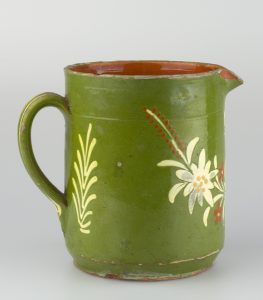
The six main colours of slipware produced in Switzerland: white, black, red, beige-pink, blue and yellow-green.
Andreas Heege, 2020
By contrast to Swiss pottery research, the English-language literature does not make a terminological difference between slip that is used to coat the entire vessel (“Grundengobe, engobe de fond”) and slip that is used to create a pattern, e.g. in slip-trailing (“Malengobe, engobe à peindre”). The English text presented here is a – perhaps somewhat clumsy – attempt at making a clear distinction between the two even in the absence of specific technical terms.
Adding an all-over coat of white, red, dark-brown/black, beige, light blue or green slip to a vessel could improve the intensity of the colour and the adhesiveness of its lead glaze. It was also necessary in cases where local clays did not produce a colour of suitable quality or uniformity when combined with a glaze or decoration. The clays used in the production of the slip coating turned white or red when fired and other colours were also sometimes added. The slip was applied by dipping or pouring it onto the leather-hard vessel (slip coating). The all-over coats of slip also often served as an undercoat or background for other decorative techniques such as incised or chattered decoration, geometric slip decoration, slip trailing, brushwork, combed, poured slip and marbled decoration, as well as splashed or sponged decoration.
Earthenware production in the German-speaking parts of Switzerland began with coats of white slip applied to one side of the vessel only (from the second half of the 14th century), followed later by red slip (prior to 1500). Coats of slip (and glaze) on both sides (inside and out) were a mid-17th century innovation. Coats of black slip were not used until c. 1780 (on Heimberg-type pottery). From around 1800/1820, coats of orange-beige slip which was almost indiscernible from the colour of the fabric itself, began to be used. Coats of ultramarine slip could be found in the Heimberg-Steffisburg region from the late 19th century, bright yellow-green slip usually not until after 1900. These shades were probably inspired by the colour palette of the more modern “Thun majolica”, although it must not be overlooked that the company “Pflüger Frères & Cie” in Nyon used similar colours on their pottery as early as 1878 to 1883 and that there were also stylistic overlaps between the Nyon and Steffisburg productions (SNM LM-80590.1).
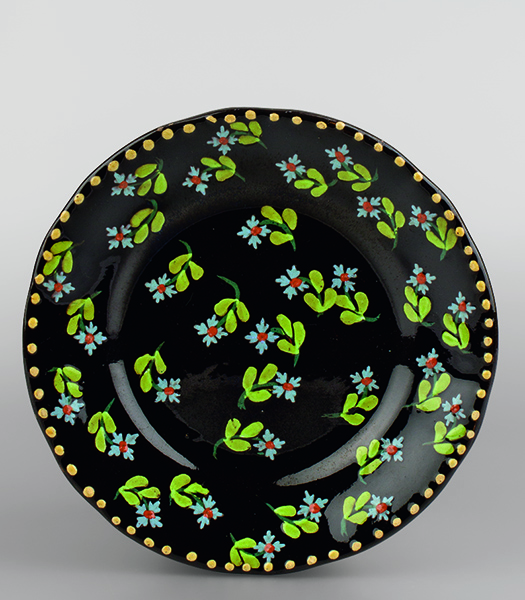

Plate made by the company Pflüger Frères et Cie, 1880-1883 (trade mark registered in November 1880).

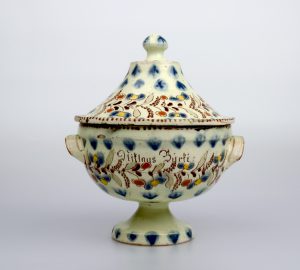
One of the distinctive features of Swiss pottery production in the second half of the 19th century was the use of two coats of slip (double-slipped ware, double-slipping). The first coat was black-brown, the second was white. Any patterns that were then added (incised or sgraffito decorations) appeared as dark lines. The first tenuous indications that the technique was also used in the Heimberg-Steffisburg region date from the late 1830s (Heege/Kistler 2017a, 480-485). It was later also used in the production of Thun Majolica.
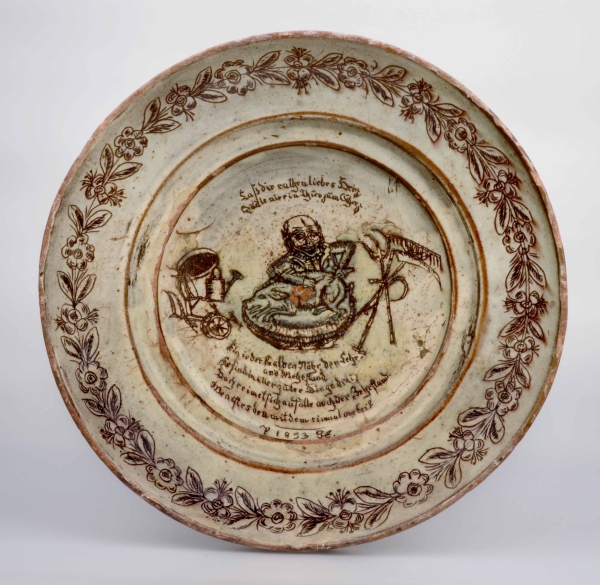
In Langnau (Canton of Bern) double slipping was first employed in the mid-19th century in association with Johann Martin Labhardt, a journeyman from Steckborn (Canton of Thurgau) (Heege/Kistler 2017b, 381-386).
Translation Sandy Haemmerle
German: Grundengobe
French: Engobe de fond
References:
Heege/Kistler 2017a
Andreas Heege/Andreas Kistler, Poteries décorées de Suisse alémanique, 17e-19e siècles – Collections du Musée Ariana, Genève – Keramik der Deutschschweiz, 17.-19. Jahrhundert – Die Sammlung des Musée Ariana, Genf, Mailand 2017.
Heege/Kistler 2017b
Andreas Heege/Andreas Kistler, Keramik aus Langnau. Zur Geschichte der bedeutendsten Landhafnerei im Kanton Bern (Schriften des Bernischen Historischen Museums 13), Bern 2017.

